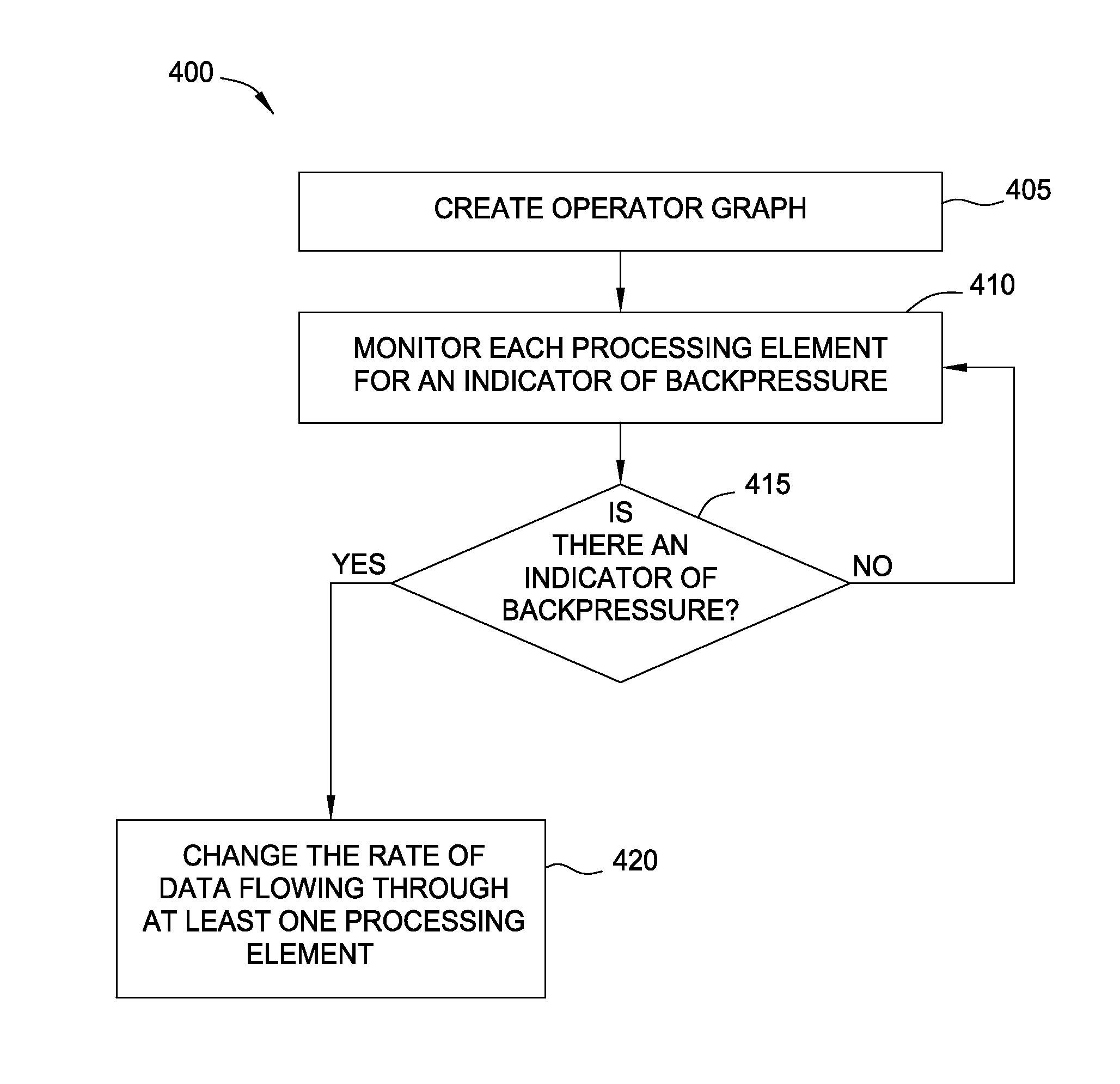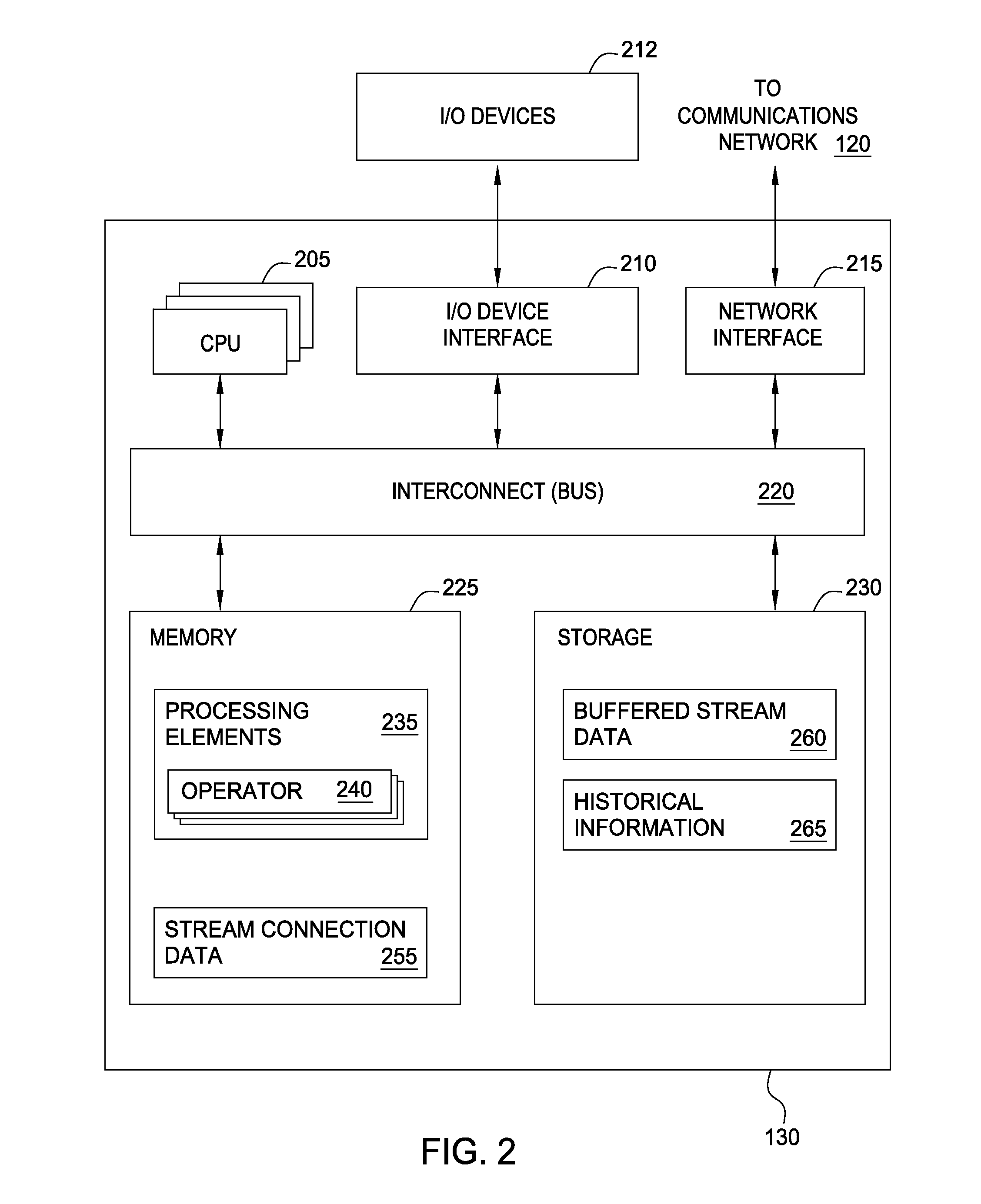Dynamic reduction of stream backpressure
a backpressure and stream technology, applied in the field of stream applications, can solve the problems of limiting the processing or otherwise evaluating of large amounts of data in real-time, the rate at which a database system can receive and store incoming data, and the model cannot meet the performance requirements of some real-time applications, so as to achieve the effect of increasing the data throughpu
- Summary
- Abstract
- Description
- Claims
- Application Information
AI Technical Summary
Benefits of technology
Problems solved by technology
Method used
Image
Examples
Embodiment Construction
[0017]Stream-based computing is emerging as a technology that enables continuous analysis of large amounts of moving data to improve a user's decision making process. Products are available which allow users to create applications that process and query streaming data before it reaches a repository. With this emerging technology, users can specify processing logic to apply to inbound data records while they are “in flight,” with the results available in a very short amount of time, often in milliseconds. Constructing an application using this type of processing has opened up a new programming paradigm that will allow for a broad variety of innovative applications, systems and processes to be developed, as well as present new challenges for application programmers and database developers.
[0018]In a stream application, operators are connected to one another such that data flows from one operator to the next forming a logical dataflow graph. Scalability is reached by distributing an ap...
PUM
 Login to View More
Login to View More Abstract
Description
Claims
Application Information
 Login to View More
Login to View More - R&D
- Intellectual Property
- Life Sciences
- Materials
- Tech Scout
- Unparalleled Data Quality
- Higher Quality Content
- 60% Fewer Hallucinations
Browse by: Latest US Patents, China's latest patents, Technical Efficacy Thesaurus, Application Domain, Technology Topic, Popular Technical Reports.
© 2025 PatSnap. All rights reserved.Legal|Privacy policy|Modern Slavery Act Transparency Statement|Sitemap|About US| Contact US: help@patsnap.com



